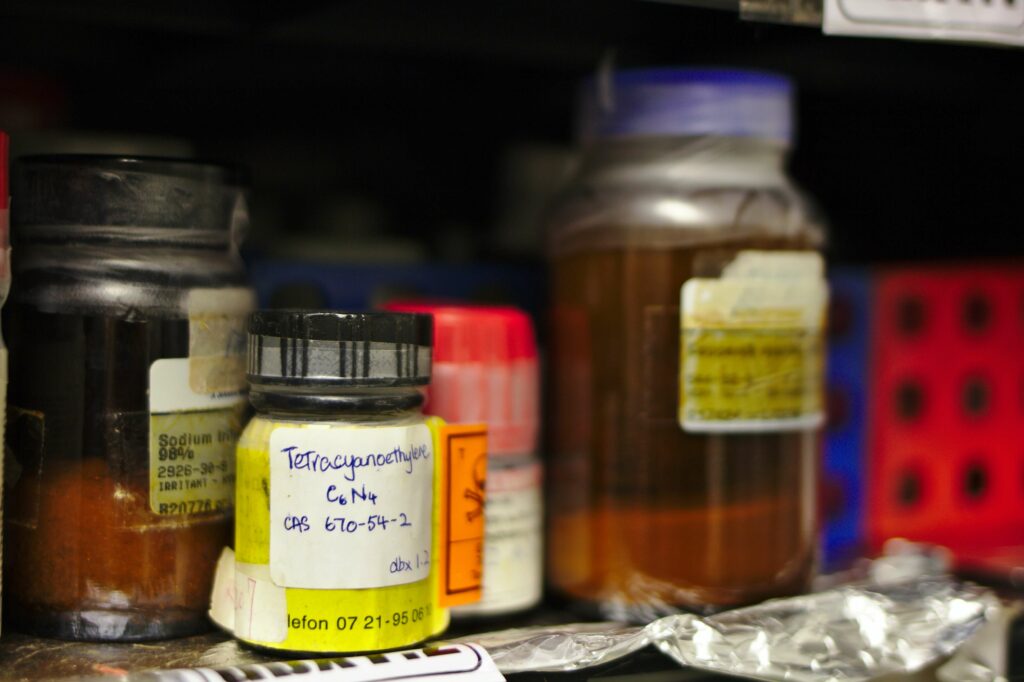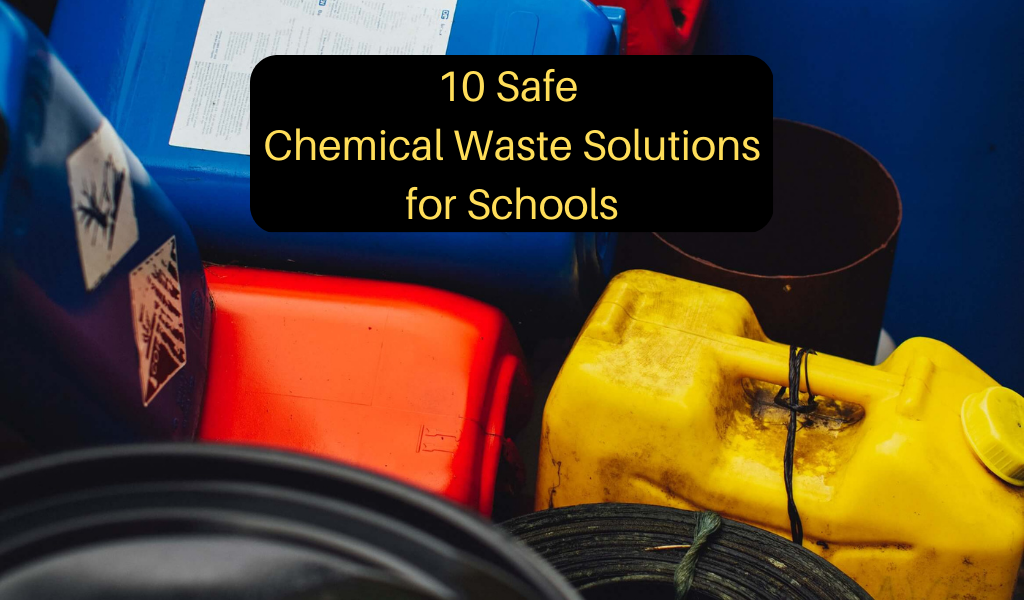Can you dump it down the drain? Here are the 10 chemical waste solutions you can use for your school-based cleaning.
Chemical waste solutions can feel daunting. There are numerous considerations about what to do with chemical waste. What kind of chemical is it? Where does it end up if you dump it down the drain or toss it in the dumpster? What are the consequences, both environmentally and legally, of disposing of chemical waste improperly?
In your role as a commercial cleaner, you may encounter chemicals in the classroom or administrative offices in addition to the cleaning chemicals you use on the job. So even if you follow green cleaning practices, there’s still no guarantee that you won’t find chemicals that you’ll need to deal with. Older buildings especially may have any number of chemicals and other potentially toxic substances hidden deep in storage closets or cupboards.
As confusing as it may seem, there are protocols, guidelines, and tools that offer safe chemical waste solutions for schools and other facilities, as well. Here’s an overview of what you can do to keep everyone safe while taking care of chemical hazards.
Harness the value of Janitorial Manager to streamline your cleaning operation like never before. Learn more today with a discovery call and find out how to make your cleaning operation more efficient and cost effective!

10 Chemical waste solutions and guidelines you need to know about
1. Know what to look for. The first step in finding the right chemical waste solutions is knowing what to look for. The EPA points out that it’s worth paying attention to chemicals that are unidentified, stored in inappropriate or deteriorating containers, expired, flammable, corrosive, or they are otherwise known to be toxic (such as pest control).
2. Involve administration. Improper disposal of hazardous waste may lead to fines, but worse, it’s dangerous. Therefore, it’s important to involve school administration, as you may need to hire a specialized hazardous waste removal company.
3. Engage teachers. In addition to cleaning chemicals, there are a lot of school supplies that may be hazardous, As such, teachers and students should not throw certain items and chemicals in the trash or dump them down the drain. The State of Vermont, for example, bans materials such as lab chemicals, mercury thermometers, ammonia, bleach, pesticides, photography chemicals, print toners, fluorescent light bulbs, and some batteries from the trash.
4. Check out the Toolkit. The EPA has a “Toolkit for Safe Chemical Management in K-12 Schools” that includes a wealth of chemical waste solutions. They share tips for removing chemicals, preventing mismanagement of chemicals, and promoting sustainable options for cleaning and learning purposes.
5. Understand Chemical Safety Labels. There’s no way most of us can recall the specifics of how flammable or reactive any one chemical is. That’s why safety labels are so vital. At a glance, you can tell if you need to use a breathing apparatus around the chemical, the likelihood it will detonate, or if it will burn easily. OSHA offers a quick summary of two different labeling systems: one for emergency personnel and one for workers in normal workplace conditions.
6. Label known chemicals. In cases where you can’t entirely eliminate chemicals, one of your chemical waste solutions is the previously-mentioned hazardous disposal specialists. Still, it’s important to label chemicals, so everyone is clear about what is in any container. The State of Washington has free, printable labels for dangerous, hazardous, non-hazardous, universal, auto, and miscellaneous waste. These include labels for toxic materials, batteries, mercury-containing equipment, used oil, and pharmaceuticals, among others.
7. Separate hazardous waste. Regardless of how you dispose of hazardous or chemical waste, there’s a good chance you’ll need to store it for at least a short time. It is extremely important to separate different kinds of waste, especially since some can be dangerous when they contact each other, such as bleach and ammonia.
8. Switch to green cleaning products. Even with the various chemicals you may encounter throughout the school, the chemicals you interact with most are your cleaning chemicals. While you still need to use caution with these products, most are much safer for both people and the environment. Look for Safer Choice or DfE-certified products to ensure you get high-quality products with environmentally-sound manufacturing and commercial use.
9. Ensure your chemical spill procedures are up to date. Accidents happen, and while you can do a lot to prevent them, you still need to be prepared. A robust chemical spill protocol and cleanup procedures will help streamline the process if there is a spill. Additionally, preparation ensures safety, as you’ll know if you need to evacuate students, if you can clean up the spill yourself, or if you need hazardous waste experts to come in, and what kind of materials you’re dealing with.
10. Contact your state agency for help. Every state has a department dedicated to environmental issues and enforcement. It may be the Department of Environmental Management, Department of Ecology, Department of Environmental Conservation, Department of Environmental Quality, or something similar. They all serve essentially the same function, and they can be fantastic resources for questions or guidance regarding chemical waste solutions.
Chemical waste at your school can be stressful. But it doesn’t have to be. Working with the onsite staff and state agencies can help eliminate the stress. In turn, you can do what you do best: ensure the students have a safe, healthy place to learn.
If you’re ready to increase the professionalism of your cleaning operation through better organization, easy access to important data, unparalleled tracking, and more, schedule a call with JM today!

